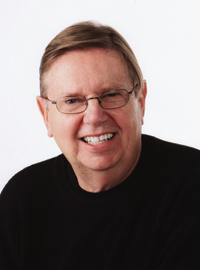Siwe, Thomas
Biography
Born: February 14, 1935
Country: Chicago, Illinois, U.S.A.
Studies: University of Illinois (B.M.1963. M.M.1966)
Teachers: Hunter Johnson, Robert Kelly, Jack McKenzie
Mentions: Elected to the Percussive Arts Society "Hall of Fame" (2011)[1]
Professor Emeritus Thomas Siwe earned both his B.M. and M.M. degrees at the University of Illinois. Upon graduation, he performed extensively as a soloist and recorded both solo and ensemble music, playing with such diverse groups as the Chicago Symphony, Boston Pops Orchestra, University of Chicago Contemporary Chamber Players and the Harry Partch Ensemble. He is a former member of the Chicago Lyric Opera, Sinfonia da Camera, and the U.S. Marine Band at Camp Pendleton. Professor Siwe began his teaching career at Northwestern University. He later taught at the University of Wisconsin and Northern Illinois University before returning to his alma mater, the University of Illinois, to direct its percussion program from 1969 to 1998. His students may be found teaching in many well-known collegiate music schools and departments and are members of some of the most prestigious performing organizations throughout the United States. As a past president of the Percussive Arts Society, Professor Siwe served on the Society's Board of Directors and contributed articles to both Percussive Notes and the Research Edition. His catalogs of percussion ensemble and solo music are found in libraries throughout the world. They are currently available on-line at the PAS web-site, www.pas.org. His most recent publication, Percussion: A Course of Study for the Future Band and Orchestra Director, is available from Media Press. [2]
Books on Percussion
Siwe, Thomas. Percussion: A Course of Study for the Future Band and Orchestra Director Second Edition. Chicago, IL.: Media Press Inc., 2007. - Method Book
Siwe, Thomas. Percussion Ensemble Literature. Champaign, IL.: Media Press, Inc., 1998.
Siwe, Thomas. Percussion Solo Literature. Champaign, IL.: Media Press, Inc., 1995.
The contents of this book start out with a large section about snare drum. It discusses the history of the snare drum and includes etudes and exercises that work on different rolls, flams, drags, ruffs, and rim shots. There are also sections on bass drum, cymbals, timpani, triangle, tambourine, castanets, small wood instruments, metal instruments, keyboard instruments (which breaks down into marimba, xylophone, glockenspiel, chimes, and vibraphone), and drum set. It teaches one how to hold the stick, where the playing area is, how to hold the instrument, how to tune, and the different strokes that are used. There are also pictures to show how to hold or where to play instruments, which sticks to use, and performance techniques. Then, it discusses world percussion and marching percussion displaying the different instruments and techniques. Afterward, there is a section for instrument care and repair, a helpful list of references, a list of resources, methods, and finally the PAS rudiment chart as the books conclusion.
Overall, I think this text is very helpful because it not only shows how to hold the triangle, but also shows where the playing spot is, how to suspend it and use two beater to play faster passages, and how to play in the corner for a tremolo sound. This is one example of a simple percussion instrument that most people (even percussionist if they weren’t properly taught) don’t know how to play correctly. This book also has pictures which expand the words into a visual element. This is helpful because trying to explain how to hold a triangle could be difficult if there wasn’t a picture right beside it. I think this book is a great and simple way to begin learning and teaching percussion. A weakness of this method book is that the exercises are fairly easy, so if one is looking to teach further than the beginner’s level I would suggest finding more books on the subject.
There are two versions of this book: a student work book and an instructor’s manual. They are both filled with mostly the same material, but the student workbook is what students would purchase for class and the instructor’s manual has suggestions for lesson plans, a class schedule, a syllabus, and even a final exam. In a way, you could teach a class from this book because it spells every single detail out for you to follow.
Works for Percussion
10 Hall of Fame Snare Drum Solos - Snare Drum
Duet for Snare Drum and Timpani – Percussion Duo; Snare Drum; Timpani
Latin Sextet - Percussion Sextet
References
- ↑ Thomas Siwe Hall of Fame Bio Retrieved 11/07/2012
- ↑ http://www.mediapressinc.com/pages.php?pageid=2&composer=71 Retrieved 11/07/2012
